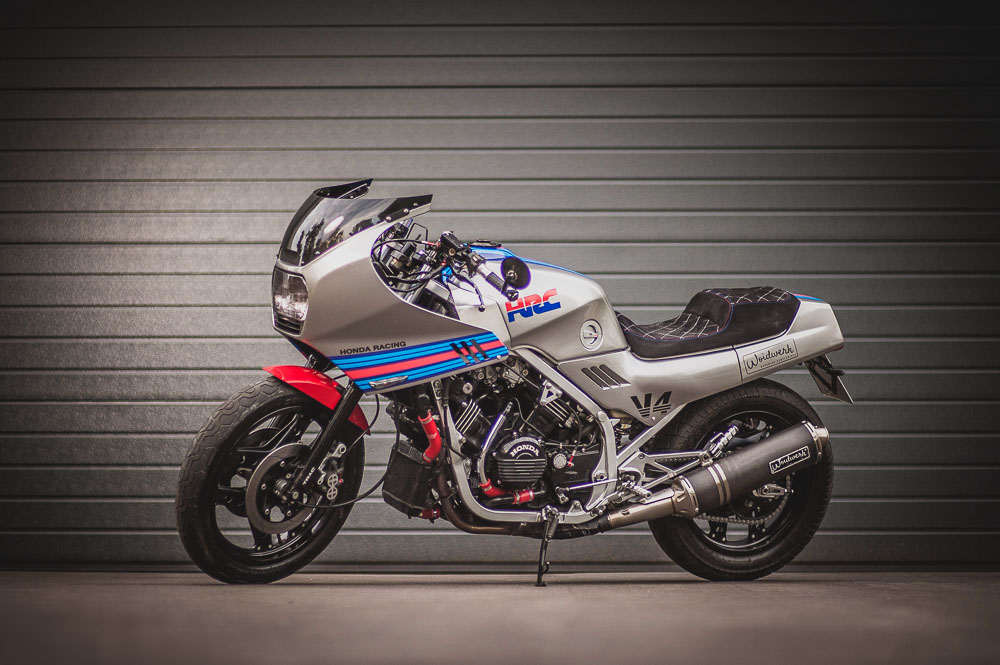
It is easy to look at the current state of GP and Superbike racing around the world and conclude that Ducati simply beat everyone to the V4 punch. And it’s true the Bologna factory is dominating and only Yamaha are left, helplessly flying the flag for the inline-4 brigade. But decades ago Honda knew the V4 was the way of the future and staked their racing fortunes on the configuration. The road bikes followed and most people didn’t get it, but one man in Germany not only saw the future but guided his grandson in the art of motorcycle mechanics. Bought new in 1985, this Honda VF1000F2 was the daily rider for two decades for Ralf Eggl’s grandfather. Now the head honcho of Bavaria’s Woidwerk has transformed the revolutionary rocket into a modern racer for the road.
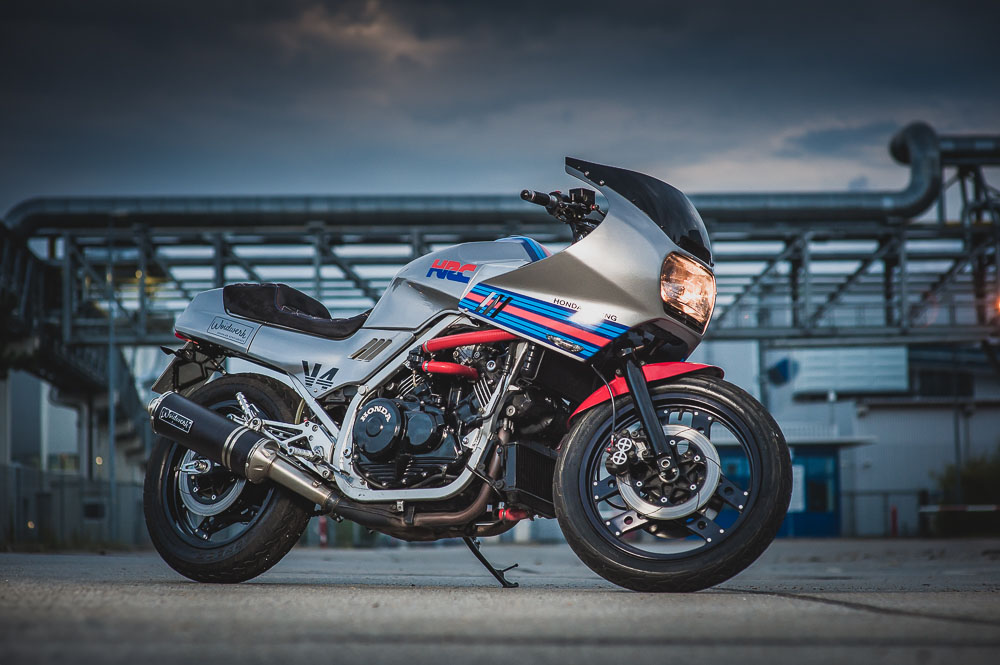
At this moment in 2023, if you want to be at the top of the standings in MotoGP, WSBK or BSB, then you need to be riding a V4-powered Ducati. In the premier class, Ducati, Honda, Aprilia and KTM all rely on the engine configuration for their powerplants, and Yamaha who are sticking with the inline bike, would be in the wilderness without the French flyer, Fabio Quartararo. But it remains only Honda who has stuck fat with the V4 for decades, and for Freddie Spencer, Doohan, Rossi, Marquez and more, it’s delivered them world titles as a two-stroke or four. The engine configuration is small physically, can be positioned perfectly in a chassis and delivers low-down torque, as well as screaming top-end power.
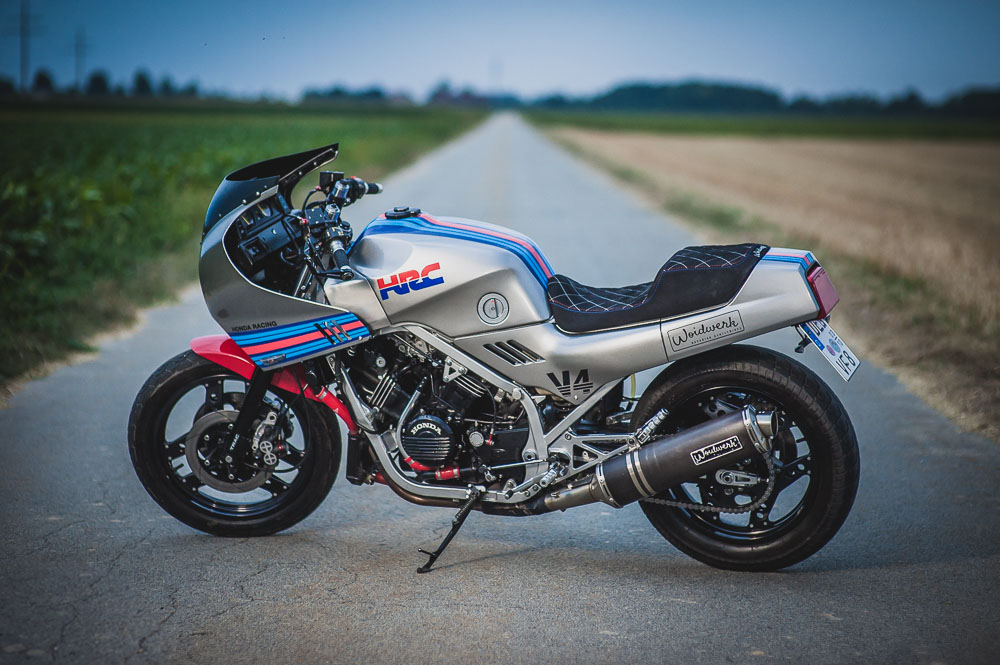
So, in the early ’80s, Honda started building road-going examples, and the VF1000F2, while a quirky thing at the time, was one of the best. Clearly, Ralf’s grandfather thought so, as he bought one brand new and stuck solid with it until 2005. During that time he taught Ralf plenty about bikes and inspired him to go on to the running of his own family operation, Woidwerk, where beautiful custom bikes are built. Back in 2015 the VF had sat around for a decade and needed some love, and Ralf thought that it would make for a fantastic street bike with some modern flair. Once again, he too was ahead of his time, the sportbikes of that period are now only getting a look in.
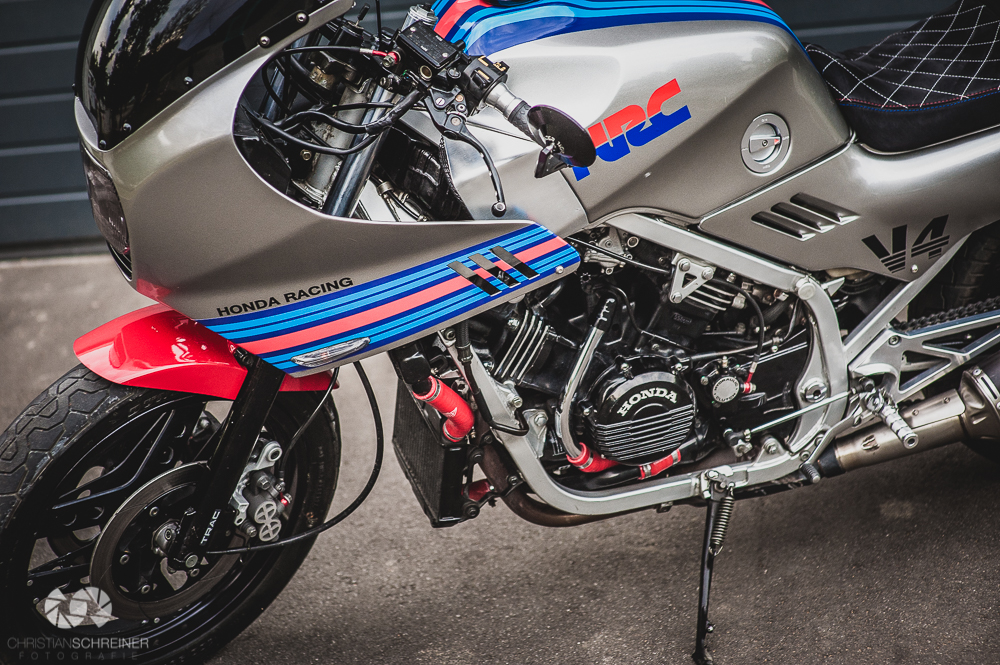
As an F2 example, the bike had the full fairing, which was a very deliberate effort by Honda to hide the V4 engine. But Ralf rightly thought this was crazy and in drawing up his design, he wanted to open up the look to show off the mechanical masterpiece. In addition to displaying more of the powerplant, the idea was to slim the whole bike down, improve the chassis dynamics and generally give the bike a one-off look to set it apart from the pack. To get things going the bike was stripped back to its bare frame, and the square steel tube design ensures that the VF has a very stiff chassis with excellent feedback.
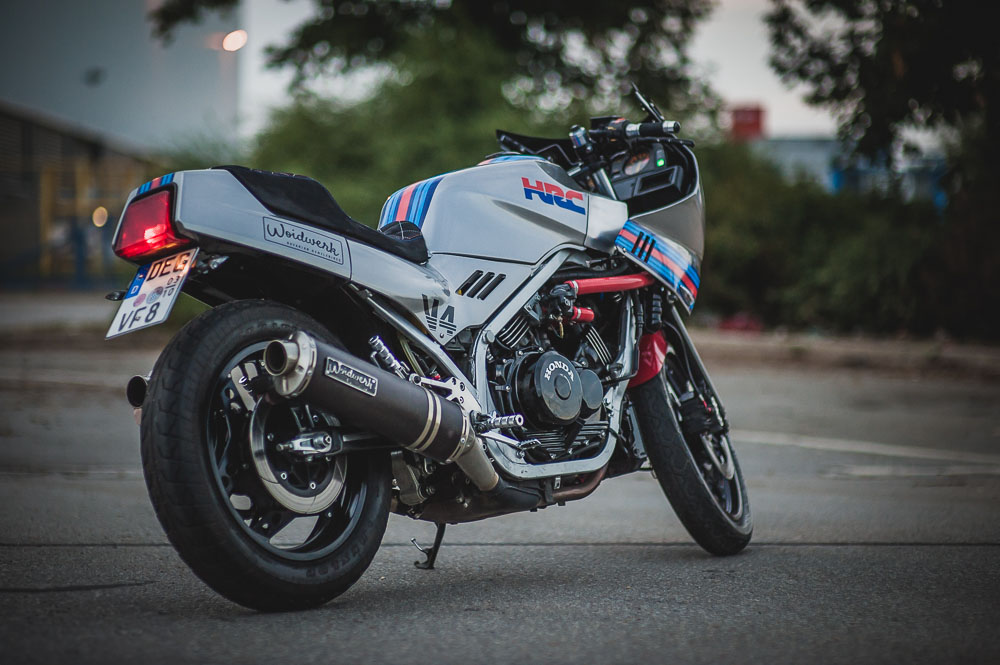
The main cradle is relatively compact, something made possible by that engine configuration, but the back end is way too long. “The rear has been shortened by 8cm from the original look, narrowed and provided with a small license plate holder,” Ralf explains. And this procedure not only balances out the look of the bike but in removing that steel, saves some weight too. The change meant the rear fairing has been modified to match, and the distinctive tail light now floats over the back tyre, rather than being lost out in the wilderness like the original.
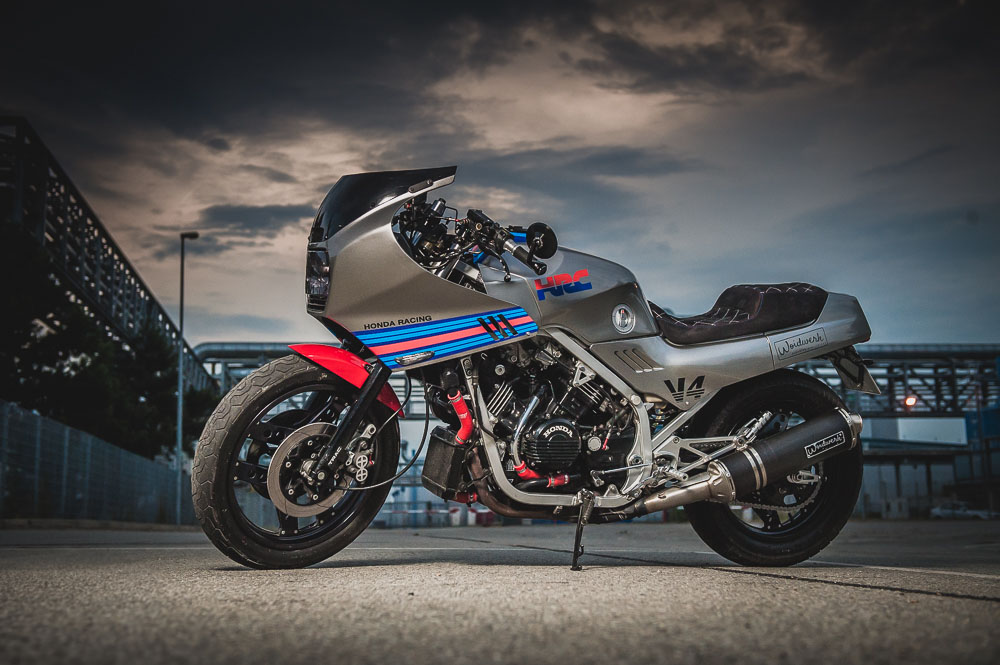
Further forward and the side fairings have all been ditched to open up space around the engine and the mounting hardware has been scrapped too. To give the bike a slicker look, the front fairing, which was absurdly high from the factory has been dropped a full 10cm. “This created openings on the tank, which I closed again with handmade aluminium air scoops.” Ralf has done a brilliant job finishing each part of the bodywork so that all the changes, big and small, now look as though they are factory parts and the old panel gaps have been closed off brilliantly.
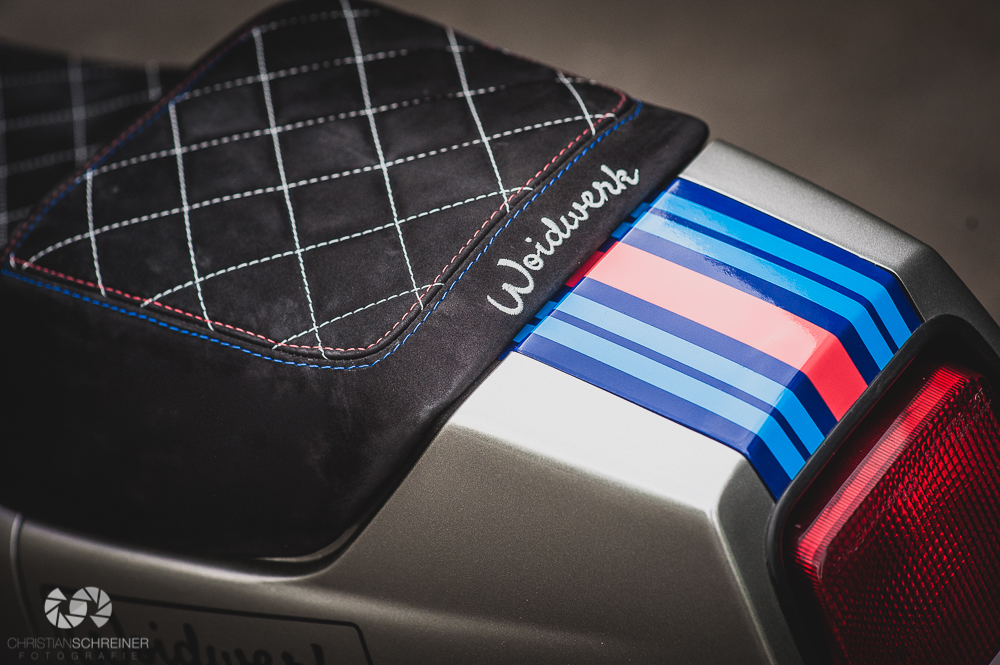
The chopped and smoked screen gives the bike a bad-to-the-bone appearance, and then it was time to draw up a paint scheme. To pay homage to the period, Ralf opted for a mix of HRC and Porsche Martini colours with the appropriate graphics and the look is quite simply a sensation.
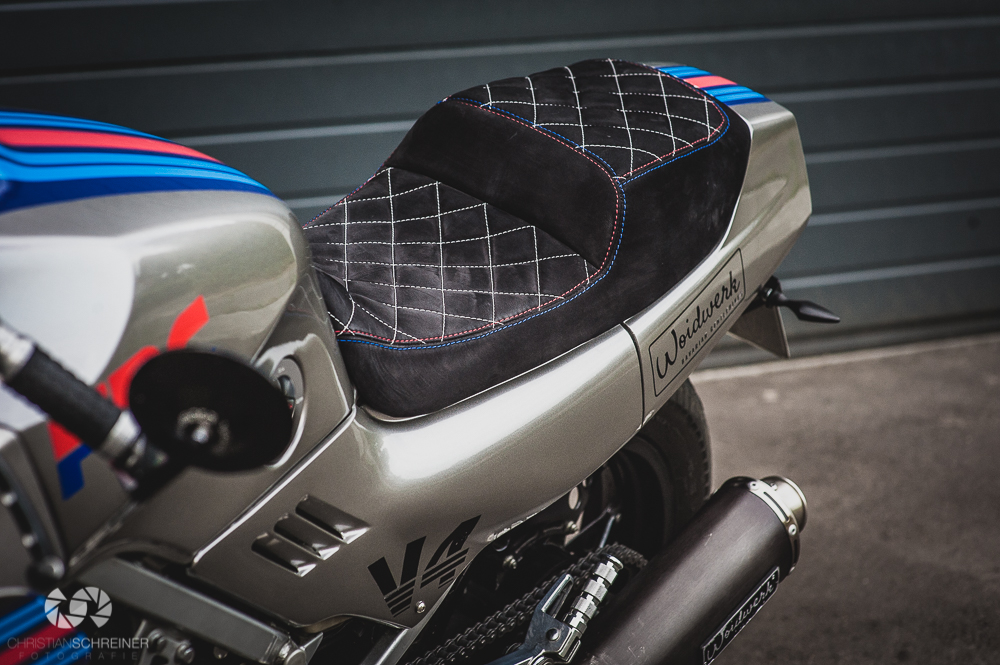
The seat doesn’t let the party down either, with the dual height unit given colour-matched stitching. What wouldn’t stay old school however was the suspension, the air-assisted and pro-link equipped Honda was high tech at the time, but now given an entire Wilbers package front and rear, including lowering to improve the geometry, and the VF handles better than ever.
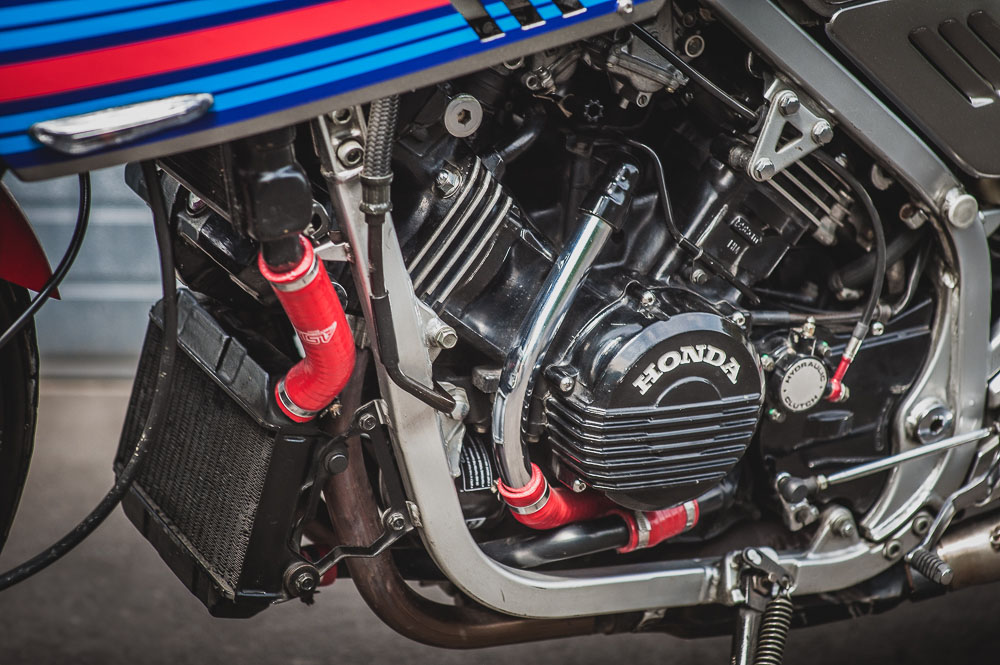
Of course what makes it a special bike is that V4 engine, premature cam wear and that horrible chain rattle aside, it was very ahead of its time. These issues have since been rectified and the motor has been given a brand-new finish and dressed up with red silicone hoses for the water-cooling system. Its ability to breathe gave the DOHC 4-valve motor its smooth 122bhp straight from the factory, and improved airboxes add 8bhp. So it makes sense to open up the exhaust side too, which Ralf wisely did using the exhaust from a modern, factory racing, V4 Aprilia.
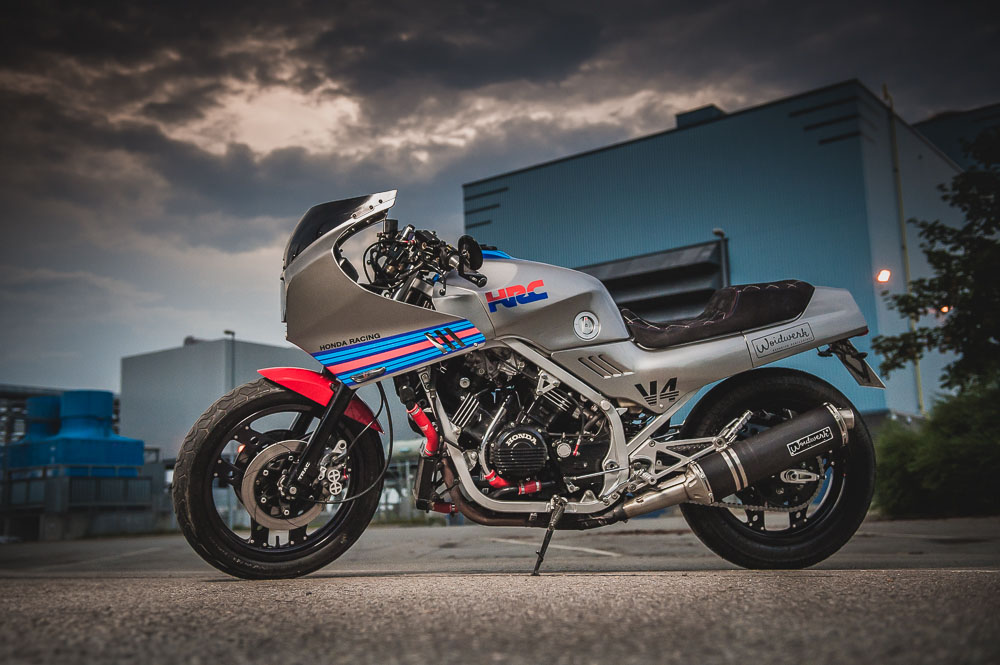
The finished product is not only one very cool and clever custom, it’s both an ode to a forward thinking factory and Ralf’s wise grandfather, whose motorcycling spirit inspired the Woidwerk way.
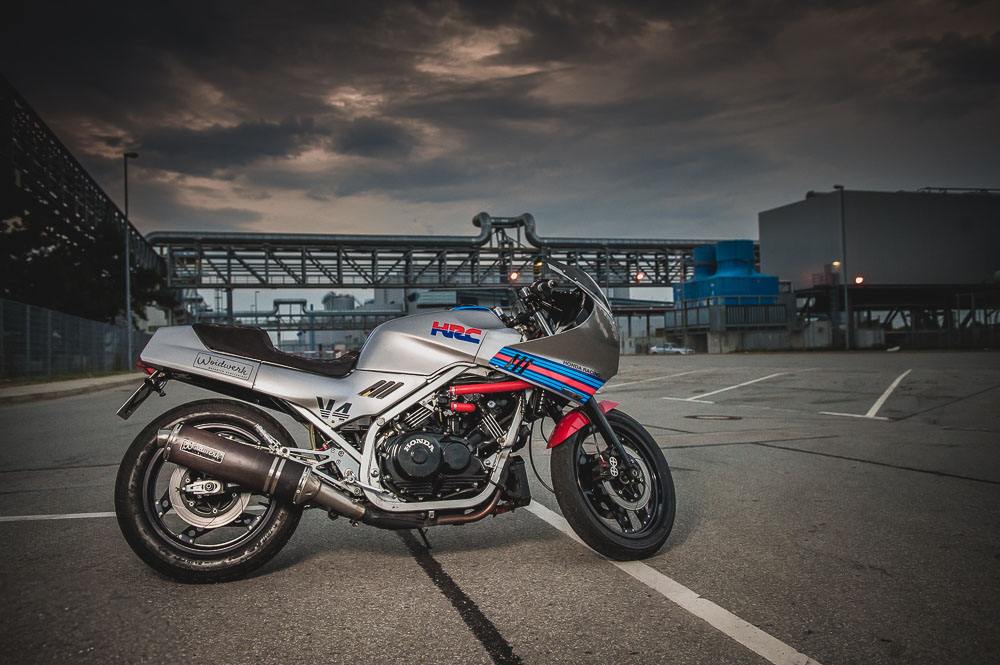
[ Woidwerk | Photography by Christian Schreiner ]
